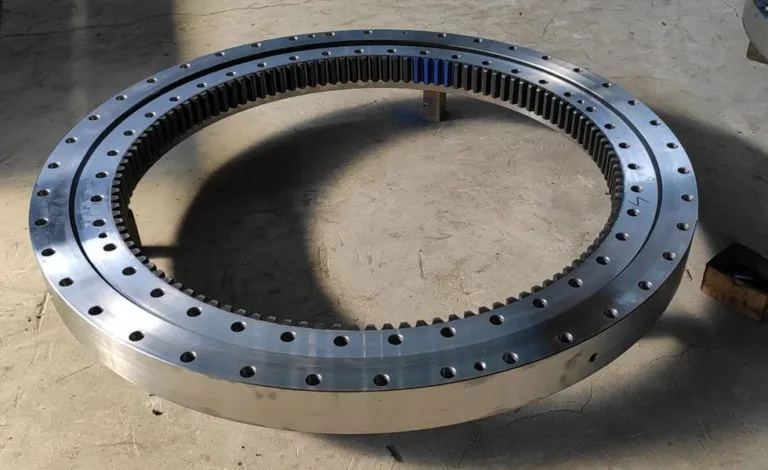-
Cangzhou Yulong Steel Co., Ltd.
-
Phone:
+86 13303177267 -
Email:
admin@ylsteelfittings.com
- English
- Arabic
- Italian
- Spanish
- Portuguese
- German
- kazakh
- Persian
- Greek
- French
- Russian
- Polish
- Thai
- Indonesian
- Vietnamese
- Zulu
- Korean
- Uzbek
- Hindi
- Serbian
- Malay
- Ukrainian
- Gujarati
- Haitian Creole
- hausa
- hawaiian
- Hebrew
- Miao
- Hungarian
- Icelandic
- igbo
- irish
- Japanese
- Javanese
- Kannada
- Khmer
- Rwandese
- Afrikaans
- Albanian
- Amharic
- Armenian
- Azerbaijani
- Basque
- Belarusian
- Bengali
- Bosnian
- Bulgarian
- Catalan
- Cebuano
- China
- China (Taiwan)
- Corsican
- Croatian
- Czech
- Danish
- Esperanto
- Estonian
- Finnish
- Frisian
- Galician
- Georgian
- Kurdish
- Kyrgyz
- Lao
- Latin
- Latvian
- Lithuanian
- Luxembourgish
- Macedonian
- Malgashi
- Malayalam
- Maltese
- Maori
- Marathi
- Mongolian
- Myanmar
- Nepali
- Norwegian
- Norwegian
- Occitan
- Pashto
- Dutch
- Punjabi
- Romanian
- Samoan
- Scottish Gaelic
- Sesotho
- Shona
- Sindhi
- Sinhala
- Slovak
- Slovenian
- Somali
- Sundanese
- Swahili
- Swedish
- Tagalog
- Tajik
- Tamil
- Tatar
- Telugu
- Turkish
- Turkmen
- Urdu
- Uighur
- Welsh
- Bantu
- Yiddish
- Yoruba

Nov . 26, 2024 22:23 Back to list
Techniques and Considerations for Pipe-to-Pipe Welding in Industrial Applications
Understanding Pipe-to-Pipe Welding Techniques and Best Practices
Pipe-to-pipe welding is a crucial process in various industries, including oil and gas, construction, and manufacturing. It involves joining two pieces of pipe together, typically for the purpose of creating a continuous flow system for liquids or gases. This article will explore the techniques, benefits, and best practices associated with pipe-to-pipe welding.
Techniques of Pipe-to-Pipe Welding
There are several welding techniques used for pipe-to-pipe joints, and the choice of method largely depends on the application, material being welded, and the conditions of the work environment. The most common techniques include
1. TIG Welding (Gas Tungsten Arc Welding) This method uses a non-consumable tungsten electrode and is known for producing high-quality welds with excellent appearance and corrosion resistance. TIG welding is ideal for thin-walled stainless steel and for situations requiring precise control over the heat input.
2. MIG Welding (Gas Metal Arc Welding) MIG welding uses a continuous feed of a wire electrode and is known for its speed and efficiency. This method is more suitable for thicker materials and is favored in many industrial applications due to its adaptability and ease of use.
3. Stick Welding (Shielded Metal Arc Welding) This traditional method involves a consumable electrode coated in flux. Stick welding is versatile and can be used in various positions, making it suitable for outdoor work and challenging environments. However, it may not offer the same level of precision as TIG or MIG welding.
4. Submerged Arc Welding (SAW) This technique involves the use of a continuously-fed electrode and is characterized by the formation of a protective granulated flux. It is commonly used for thick materials and large diameter pipes, providing deep penetration and high welding speed.
Benefits of Pipe-to-Pipe Welding
Pipe-to-pipe welding offers several advantages, making it the preferred method for joining pipes in many applications
- Strength and Durability Welded joints are generally stronger than other connection methods, such as bolting or clamping. This is particularly important in applications subject to high pressure or temperature variations.
- Leak Prevention Properly executed welds reduce the likelihood of leaks, which is crucial in conveying hazardous materials like oil, gas, or chemicals.
pipe to pipe weld

- Customization Welding techniques enable the creation of custom pipe shapes and configurations, allowing for flexibility in design and functionality
.- Cost Efficiency Although initial setup costs for welding can be high, the long-term savings due to reduced maintenance and increased reliability make it a cost-effective solution for many industries.
Best Practices for Pipe-to-Pipe Welding
To achieve optimal results in pipe-to-pipe welding, certain best practices should be followed
1. Pre-Weld Preparation Proper cleaning and preparation of the pipe surfaces are essential for a successful weld. Any contaminants, such as rust, oil, or dirt, should be removed, and the edges should be beveled to ensure a good fit.
2. Correct Fit-Up The alignment and fit between the two pipes must be precise. A poor fit can lead to issues such as inconsistent weld penetration and potential failure of the joint.
3. Selection of Filler Material Choosing the right filler material is critical. It should be compatible with the base materials and suitable for the specific application to ensure a strong joint.
4. Welding Parameters Properly setting the voltage, current, and travel speed is crucial for achieving a consistent and defect-free weld. Welders should adjust these parameters based on the pipe thickness and material type.
5. Post-Weld Inspection Conducting thorough inspections post-welding, such as visual checks and non-destructive testing methods (like ultrasonic or radiographic tests), can help identify any defects early and ensure the integrity of the weld.
Conclusion
Pipe-to-pipe welding is an essential skill in many engineering fields, ensuring the integrity and reliability of piping systems worldwide. By understanding the various welding techniques, benefits, and best practices, welders can enhance their proficiency and contribute to the successful completion of critical projects. Investing in proper training and following industry standards will ultimately lead to safer and more efficient operations.
Latest news
-
ANSI 150P SS304 SO FLANGE
NewsFeb.14,2025
-
ASTM A333GR6 STEEL PIPE
NewsJan.20,2025
-
ANSI B16.5 WELDING NECK FLANGE
NewsJan.15,2026
-
ANSI B16.5 SLIP-ON FLANGE
NewsApr.19,2024
-
SABS 1123 FLANGE
NewsJan.15,2025
-
DIN86044 PLATE FLANGE
NewsApr.19,2024
-
DIN2527 BLIND FLANGE
NewsApr.12,2024
-
JIS B2311 Butt-Welding Fittings LR/SR 45°/90° /180°Seamless/Weld
NewsApr.23,2024











